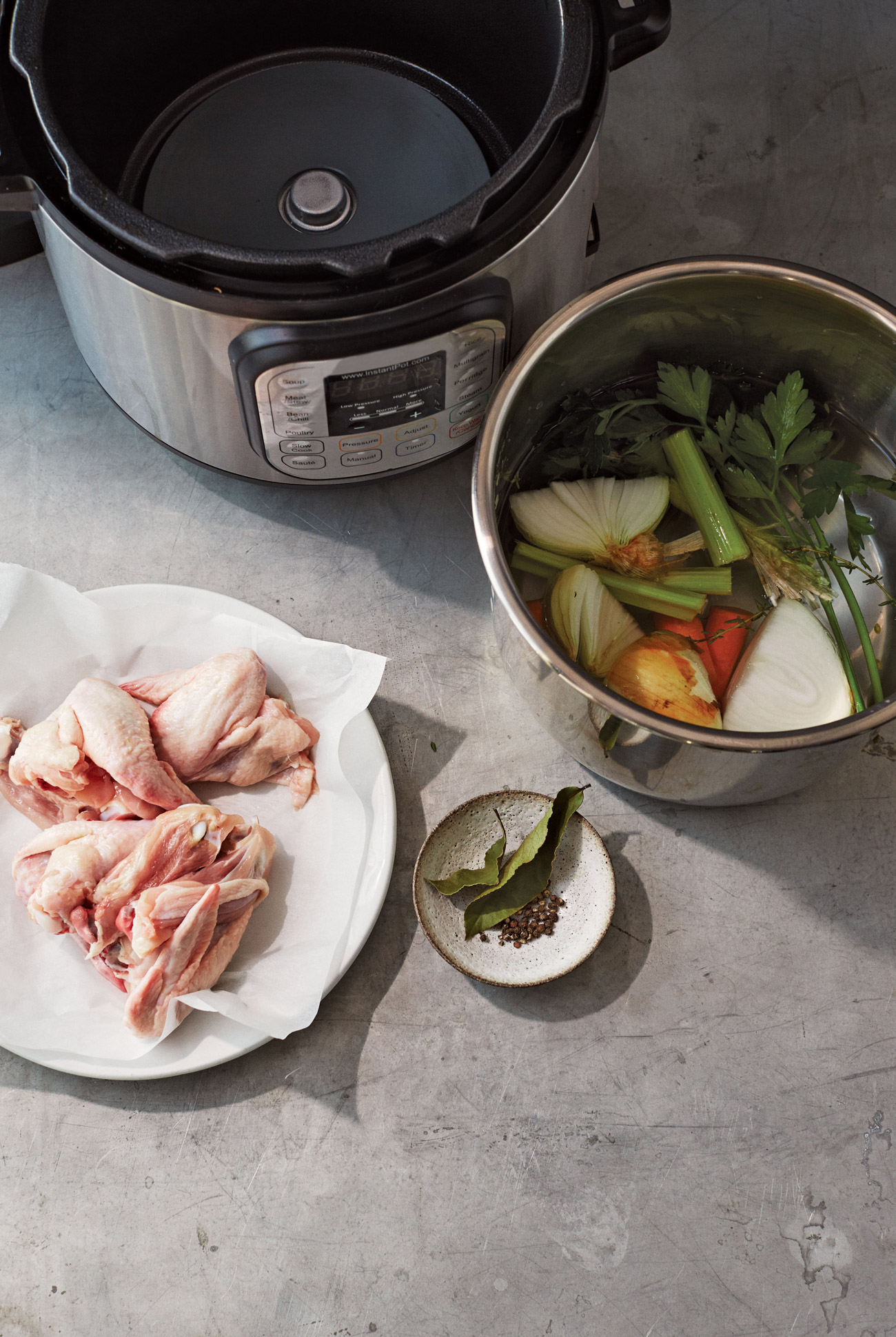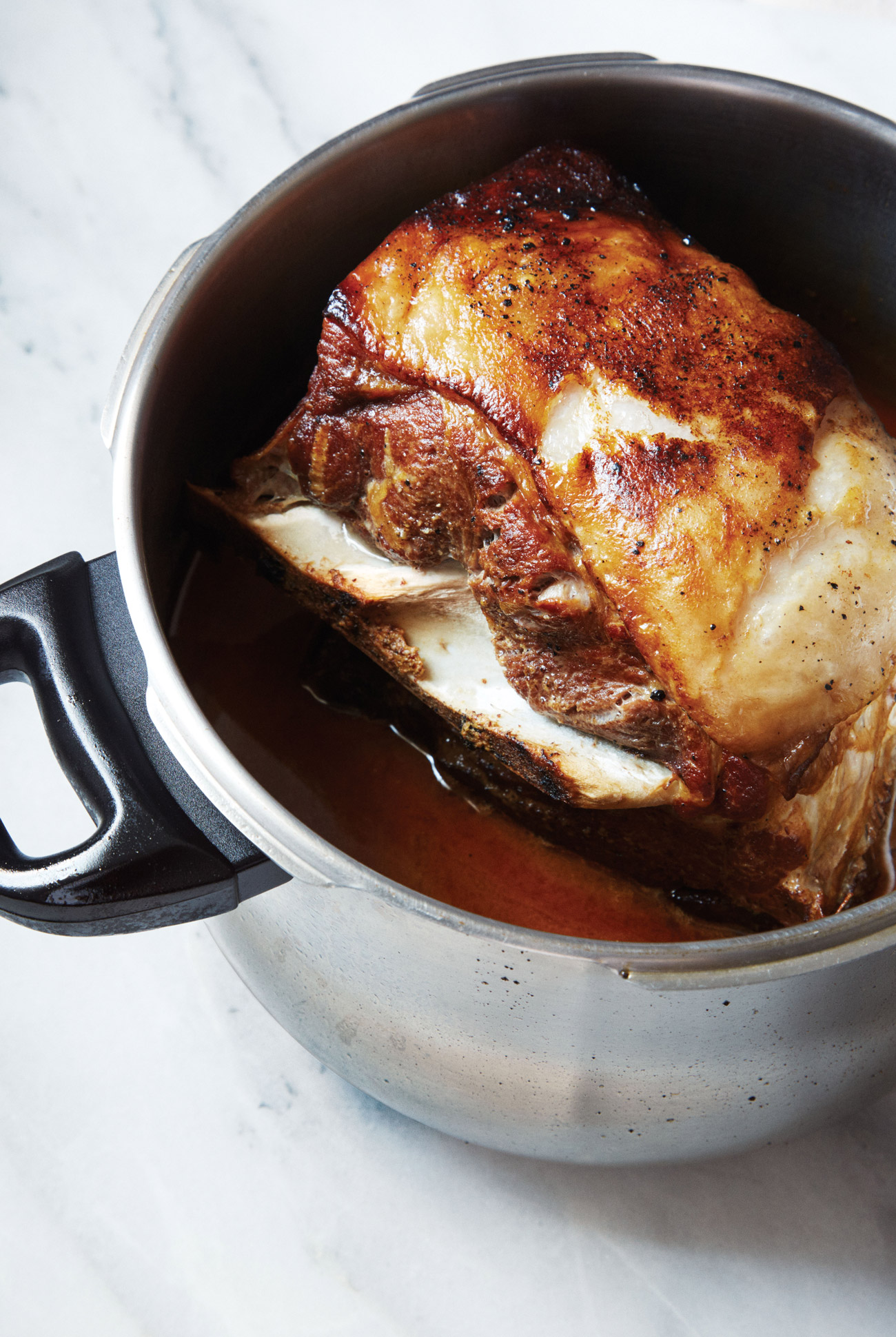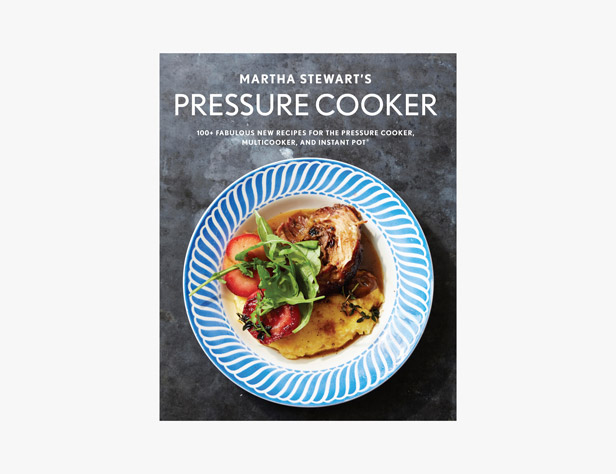Though not as all-powerful as they once were, TV chefs were once the ultimate kitchen gear nerds and there are few better examples than Martha Stewart, whose exploits in television homemaking from the ’90s and early 2000s launched an “omnimedia” company. But, before all that, she wrote cookbooks. Specifically, she wrote books that zeroed in on conquering one part of a meal, dishes made using one cooking style or anything else she deemed demanded its own book; titles like Martha Stewart’s Hors D’oeuvres in 1984, Martha Stewart’s Pies & Tarts in 1985, Martha Stewart’s Quick Cook Menus in 1988.
And so it only makes sense that, in a homecooking world seized by Instant Pots and every permutation thereof, Stewart and her team would release Martha Stewart’s Pressure Cooker this fall. Within it, readers will find over 100 recipes for all forms of pressure cooking, but the most practical advice comes at the start, in the form of 10 well-reasoned tips to kick-starting your pressure cooker obsession.
Think Big
For the sake of storage, it might be tempting to seek out a petite pressure cooker — after all, cookers come as small as three quarts. But the recipes in this book are designed for six- to eight-quart models, and we don’t recommend going any smaller. Because the pots should be only partially filled for safety reasons, a tiny cooker doesn’t make much practical sense.
Be Prepared
After purchasing any new kitchen gadget, it’s hard to resist the urge to run home and start playing with it immediately, barely glancing at the manual in the process. But in this case, a study of the instructions is especially crucial. Every cooker works differently, and if you’re not familiar with the ins and outs of your machine before you start using it, you’re more likely to end up with scorched food and spent patience.

Test the Waters
A great way to get familiar with your pressure cooker is to take it for a trial run with four cups of plain water. This simple introduction will offer hands-on experience with the machine’s features without the risk of ruining dinner. And by measuring the water before and after, you’ll be able to determine how much evaporation occurs during cooking. Some pots lose no water at all, while others lose a considerable amount. The recipes on the following pages provide a range for water, to accommodate both stovetop (which generally requires more water) and electric pressure cookers.
Begin with Beans
Once you’ve taken your pot through a not-so-dry-run with water, you’re ready to start pressure-cooking in earnest. We recommend beginning with a batch of beans. They will allow you to familiarize yourself with the machine, without a lot of expense. (In other words, if you have to start over, it’s not the end of the world.) Keep in mind that beans cook differently, depending on type, size, and age. So if your pintos or garbanzos turn out tough, just continue to simmer them. One thing to note: Our recipe developers found that beans had the best texture when they were allowed to rest in their cooking liquid for an additional thirty minutes after venting pressure and removing the lid.
Cut to Size
Those who know their way around the kitchen recognize the importance of chopping ingredients into similarly sized pieces so they cook at the same rate. When that rate is accelerated, as with pressure-cooking, uniformity is all the more important. Also, avoid chopping vegetables too small or too large. A too-small morsel can very quickly turn to mush, while an overly large piece might emerge tough or undercooked.

Don’t Overfill
A packed-to-the-brim pressure cooker will spill over quite dramatically when pressure is released. In these situations, food particles also tend to escape through the steam vent, causing clogs. A good rule of thumb is to fill the pot to a maximum of one-half capacity for ingredients with a tendency to produce foam and two-thirds capacity for everything else. With beans, we found that adding a tablespoon of oil to the cooking water cut down on foaming. Even so, when cooking a potentially foamy ingredient (think oatmeal and just about any other grain, as well as beans), it’s smart to lightly cover the vent with a clean kitchen towel when releasing steam, to avoid a mess.
Accessorize
Inexpensive add-ons like steaming baskets, racks, ramekins, and cake pans can greatly increase your cooker’s utility. Many models come with a few accessories. Other you probably already own — it’s not necessary they they be designed expressly for pressure-cooking, as long as they’re heatproof and fit comfortably inside your pot (this means 7-inch cake pans, for example).
You can even create your own foil sling, a tool that proves very useful when lifting a cooked dish out of the pressure cooker. (We use it in this book primarily for desserts.) To make a sling: Fold one 20-inch length of aluminum foil lengthwise in three. Place the pan over the foil sling and transfer to the pressure cooker, holding the sling in place. Fold tops of the sling down, if necessary, to avoid interfering with the cooker’s lid.
Get Tough
Think of the pressure cooker as the ultimate tenderizer. Where the machine truly excels is in transforming tough cuts of meat — think pork shoulder, brikset, and short ribs — into succulent dinners. The same logic holds for root vegetables and even dried beans. Many cooks prefer to prepare quick-simmering legumes, such as the lentils used in Indian dal, in a pressure cooker. While the cooker doesn’t shave off much time in that case, it does deliver incomparable creaminess.
Use Common Sense
Practically any food can be pressure-cooked, but sometimes doing so doesn’t actually save time or improve flavor or texture. Tender, fast-cooking vegetables like fresh green beans or spinach can generally be sautéed or blanched more quickly and easily. The same can be said about delicate fish. And the pressure cooker just doesn’t do crunch — dishes like gratins and whole chickens are better cooked in a gold old-fashioned oven, where they’ll crisp up nicely.
Safety First (and Last)
Though faulty cookers won’t be an issue, there are a few simple safety tips to follow: After the pot comes to pressure, release the vent away from your hands and face, letting the hot steam escape. And when removing the lid, again open away from you. At this point, all pressure will have been released, but residual steam will escape. You can use a clean kitchen towel to release the steam vent or remove the lid, if you like. Keep the towel handy when cooking grains and beans (as noted above), to lightly cover the vent when releasing steam.
The tips above were reprinted with permission from Martha Stewart’s Pressure Cooker, published by Clarkson Potter/Publishers, an imprint of Penguin Random House LLC. Covering every meal and a great many cuisines, the book’s tidy, unfussy recipes are the perfect introduction into the world of pressure cooking. Buy Now: $20


